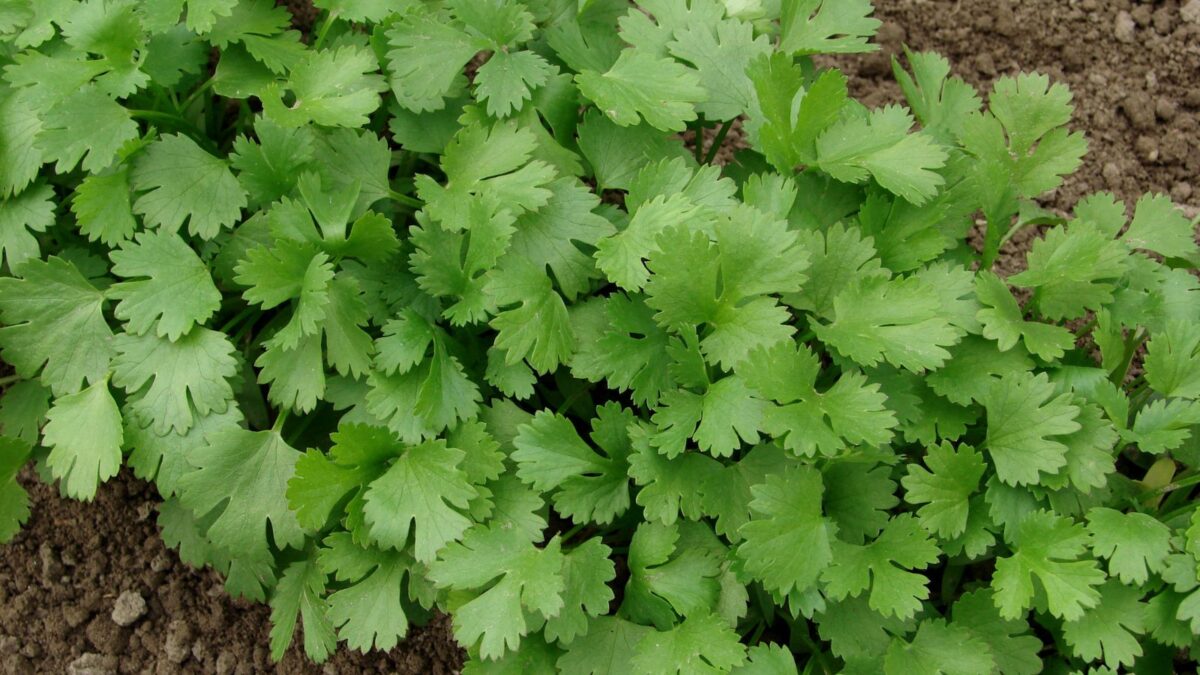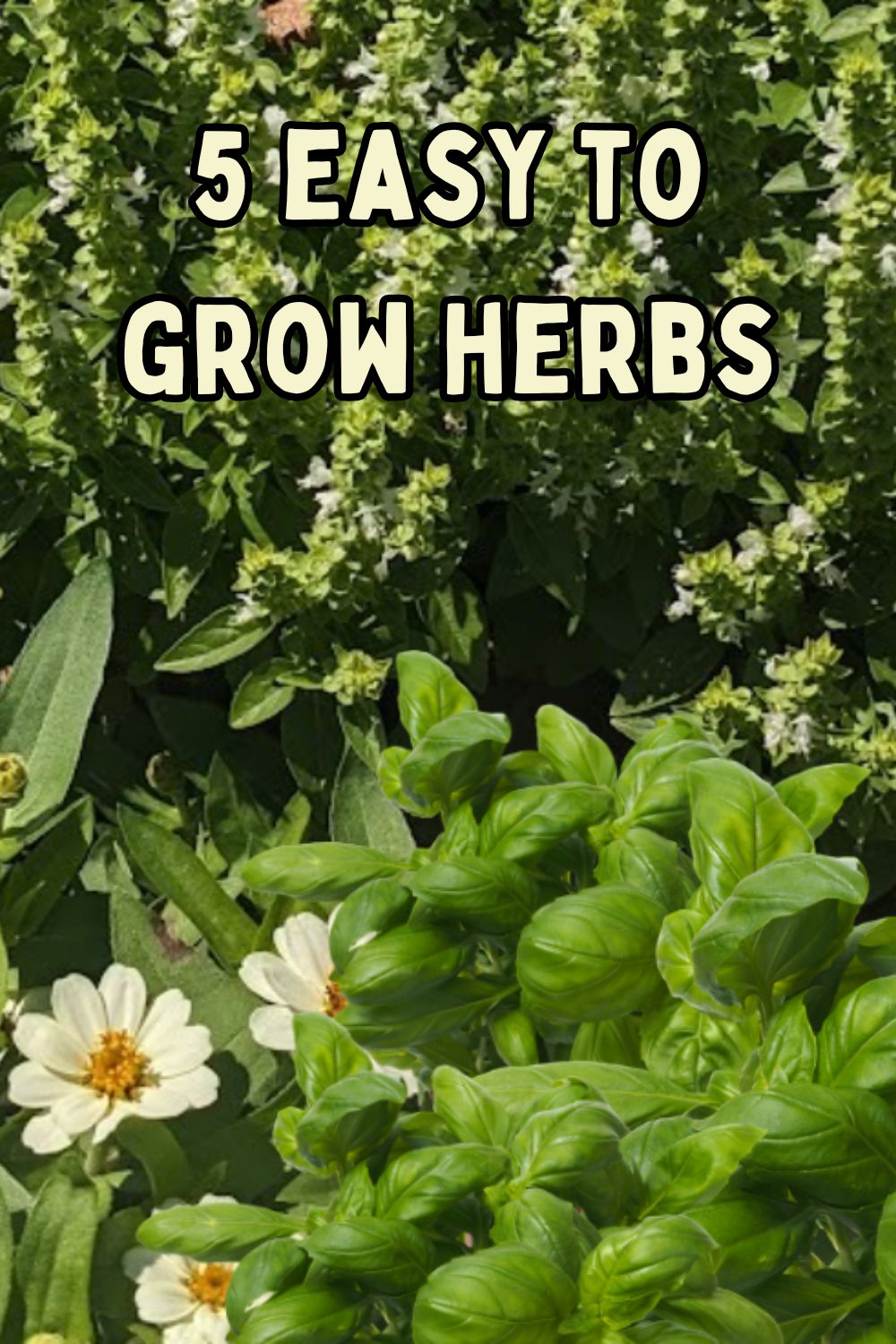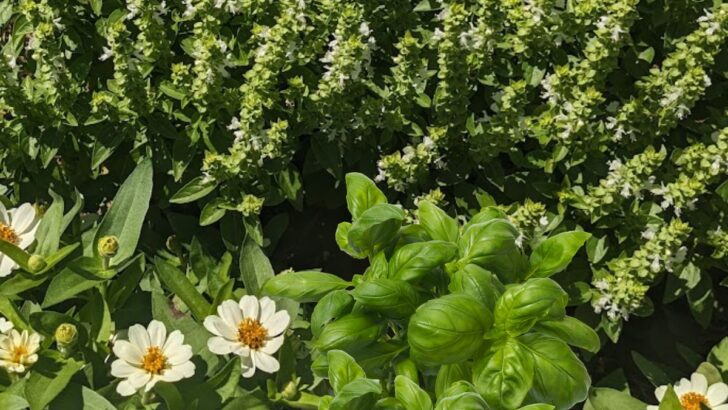Fresh herbs add so much to family meals with their added color, nutrition and taste. While some herb gardens can be quite extensive, sporting literally hundreds of kinds of plants, just a relative few have earned their place as staples in many dishes world wide. New herb gardeners will likely find these easy to grow herbs useful in a wide variety of meals.

5 Easy To Grow Herbs Every Gardener Should Plant

Did you know you could plant herbs just about anywhere? You can try growing herbs in any of these places:
- windowsill
- coffee mug
- wooden crate
- old wheelbarrow
- and more
See more ideas for planting herbs here.
1. Mint is the easiest herb to grow

While peppermint is easy to grow, it’s also quite invasive. It’s best to plant it in containers and keep an eye on it, so it doesn’t overtake your garden.
Peppermint has the strongest “mint” flavor, due to its high concentration of menthol, but there is much to be said for the subtle flavors in spearmint, apple mint, and many other varieties.
It’s not a good idea to grow this herb from seed as they hybridize so readily. Getting your own starter plant is easy, though; just ask another gardener.
Mint spreads all over gardens through its long-running rhizomes. It’s a bigger challenge to keep it contained than to keep it growing.
Use mint’s cool, fresh taste to flavor candies, ice cream, teas, sauces, jellies, fresh-steamed vegetables, and cooked fish.
It makes a great garnish and freshens breath when chewed.
2. Add basil to the herb garden

Basil is technically in the mint family, but it starts readily from seed and doesn’t last all year round. Its taste is so delicate that much of the flavor is lost when this herb is dried.
BUT, I tried a new method and I love it: make basil salt. You can keep it fresh in the fridge for a while, but I prefer drying it in the oven and keeping it in a small glass jar (makes a great gift for a gardener friend).
You could even add it to a herbal pillow.
Basil is a staple in the Mediterranean and Southeast Asian cuisines, and no wonder. The rounded leaves are beautiful as holders for hor’s d’ oeuvres, in salads, in teas, and as garnishes.
This fresh herb is also the main ingredient in pestos. Simply blend a couple of cups of packed basil leaves with pine nuts or walnuts, a ground hard cheese, salt for flavor, and enough oil to make it all blend smoothly.
Pestos work great over pasta, fish, and many other dishes. Look up a few pesto recipes online to get a sense of the wondrous variety basil provides.
3. Sage is earthy

No self-respecting herb garden can subsist without sage. A perennial, sage can be started from seed and live practically free of care thereafter.
Sage leaves often grace heavy fares, like fatty meats, stews, stuffings, and sausage. The flavor actually intensifies when the leaves are frozen, though they can also be dried and ground into a powder with good results, too.
Try fried sage leaves, and leave potato chips far behind.
The simplest way to make them is to wash the leaves after picking, shake off the excess water, toss them with a little flour and shake off the excess of that, too. Now fry the leaves in a skillet until they’re stiff. Drain them on a paper towel, salt lightly, and enjoy. Yum!
4. Herb gardeners love lovage

This herb looks and tastes similar to celery, but it’s a perennial that is so much easier to grow.
When the heat finally makes it bolt, collect the seeds, as this is what is commonly in spice racks as “celery seed.” The whole plant is edible, including the roots and stalks, though it’s best to eat these blanched rather than raw.
Lovage has a stronger taste than conventional celery, which makes it a wonderful rich flavoring for soups and steamed with bland vegetables. The seeds flavor everything from yogurts to breads.
5. When growing herbs, don’t forget the cilantro

Cilantro (also known as coriander) is another herb garden staple that just keeps on giving.
Keep clipping it short during harvest, and when you do finally let it go to seed, save those, too. Cilantro grows readily from seed, but keep it well-watered, as it does not tolerate drought well.
Good cooks just love adding the chopped leaves, stalks, or roots to stews, pasta dishes, vegetables, sparingly in green salads – anywhere that could benefit from a little peppery “kick.”
Cilantro does not dry well, so it is definitely an herb to grow.
The coriander seed is wonderful ground or roasted and added to dishes where the leaves would be welcome. Learn more about growing cilantro.




Hydroponic Gardening - Clean, Green and Nutritious!
Monday 6th of April 2020
[…] for everybody! Even if you live in a tiny apartment: with the hydro method, you can harvest healthy fresh herbs in your […]
33 Must See Front Yard Landscaping Ideas For Your Home
Monday 30th of September 2019
[…] best part is that window boxes open doors for lots of possibilities. You can try growing herbs, succulents, or small vegetables here […]
Recipes For Making Dream Pillows With Herbs From The Garden
Wednesday 28th of November 2018
[…] the inner pillow with dried herbs from your garden. Do not stuff it full or it will feel like a big lump under the head. Leave it loose and flat. Turn […]
Best Gardening Books For Beginners To Up Your Gardening Game!
Tuesday 20th of November 2018
[…] Herb Gardening. Channel your inner love of cooking and see what options await you for having an herb garden. It’s simple, and smells so good! Here are 5 easy to grow herbs. […]
How To Grow Dill And How To Save It For Winter
Sunday 7th of October 2018
[…] Wonder what other herbs are easy to grow? Try these for some serious flavor […]